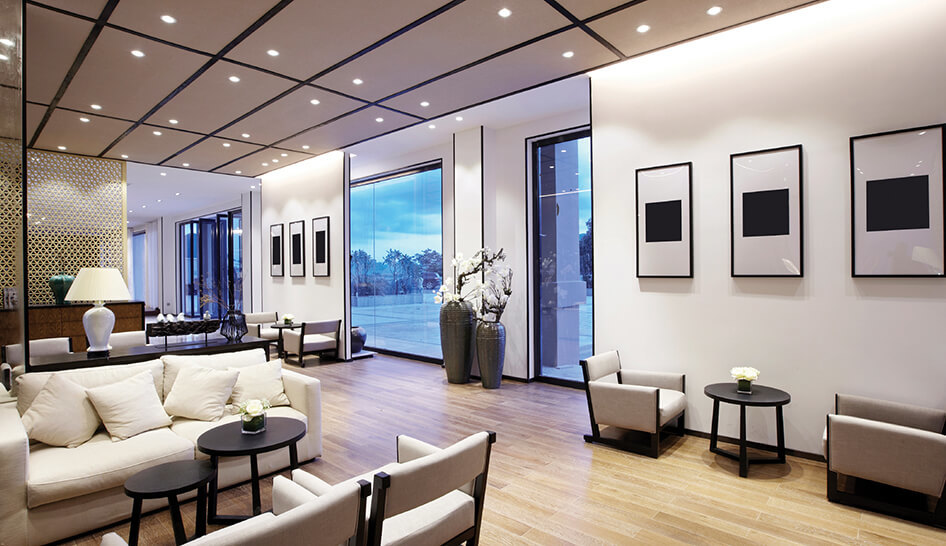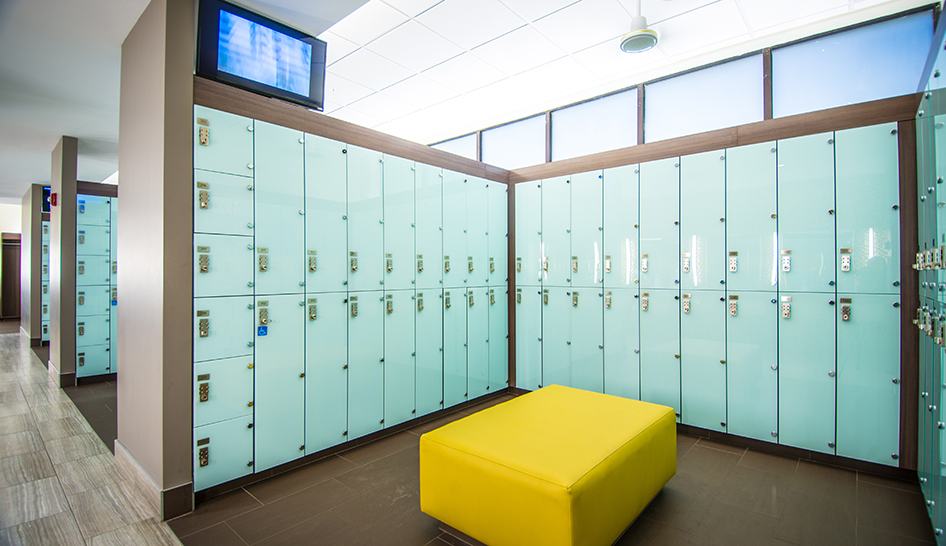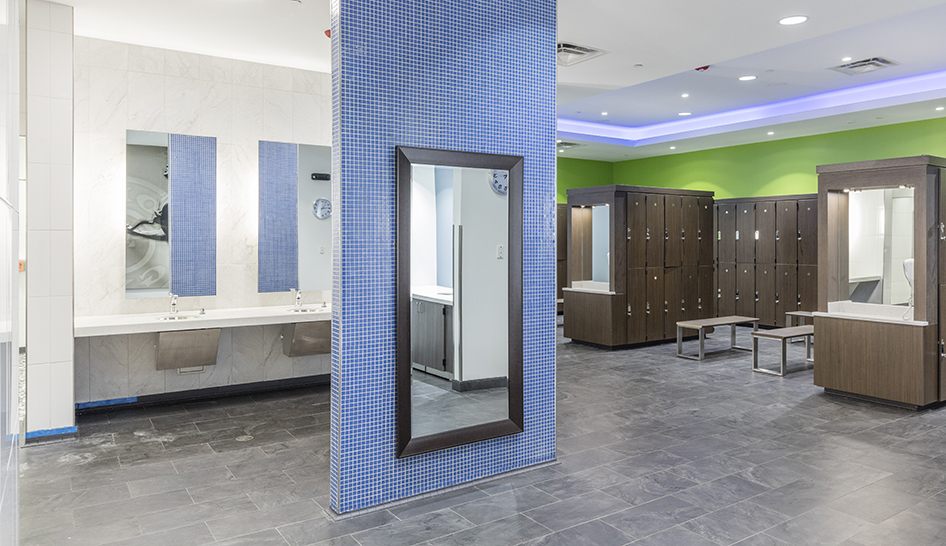Visual appeal matters and while in the past locker rooms have inclined toward the practical rather than toward haute design, paintings, fine-art photography, and other graphics are now being utilized to create a mood, engage and energize members, and even minimize maintenance requirements.
Digital printing technology—on a diverse range of surfaces—gets much of the credit.
“Over the decades, we’ve hand-painted at least 2,000 murals in fitness facilities, but, today, the trend is digital,” says Cindy Maxion, the principal at Maxion Design, in La Mesa, CA. “Digital images are less expensive, go up quickly, look much like fine art, and can be changed out easily.”
Her firm has printed on wall coverings, plastic, glass, tile, locker laminates, and acoustical materials for aquatic centers. Because the graphics are scored, or etched, they don’t degrade in areas affected by chlorine or high humidity.
For the Columbia Basin Racquet Club, in Richland, WA, Maxion and her team printed art on moisture-proof plastic for the facility’s four locker room entrances.
“If your goal is to make a big splash, digital printing makes that possible,” she says. “The sky’s the limit.”
The same technology also is being tasked to transform what’s underfoot.
Discussions about flooring technology have typically focused on such pragmatic matters as advances in durable, anti-microbial, and non-slip surfaces that comply with ADA (Americans with Disabilities Act) regulations. But, recently, its visual possibilities also have been considered and explored.
Print technologies now allow clubs to extend flooring motifs used elsewhere in the club to any space, including the locker room, or to provide a distinct look there, says Latasha Pittman, the director of marketing for Mondo USA, an Evanston, IL–based manufacturer. “We’ve been asked to introduce the marbleized or the plank-style appearance of our Ramflex weight room flooring into locker rooms,” she says. “Graphics technology now enables us to recreate these looks on the thinner-gauge rubber that we use in locker rooms.”
Using Smart Lighting


